Related Research Articles

The Museum of Modern Art (MoMA) is an art museum located in Midtown Manhattan, New York City, on 53rd Street between Fifth and Sixth Avenues.

Regeneration is a 1915 American silent biographical crime drama co-written and directed by Raoul Walsh. The film, which was the first full-length feature film directed by Walsh, stars Rockliffe Fellowes and Anna Q. Nilsson and was adapted for the screen by Carl Harbaugh and Walsh from the 1903 memoir My Mamie Rose, by Owen Frawley Kildare and the adapted 1908 play by Kildare and Walter C. Hackett.
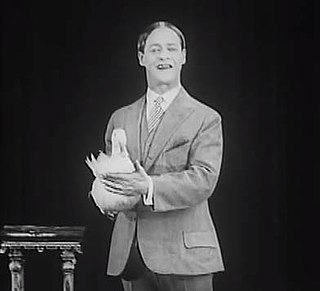
Theodore Case Sound Test: Gus Visser and his Singing Duck, also known as Gus Visser and His Singing Duck, is a 1925 American short musical comedy film starring vaudeville performer Gus Visser. The short is an early sound film, directed by Theodore Case while perfecting his variable density sound-on-film process. Case began working on his sound film process at the Case Research Lab in Auburn, New York, in 1921.
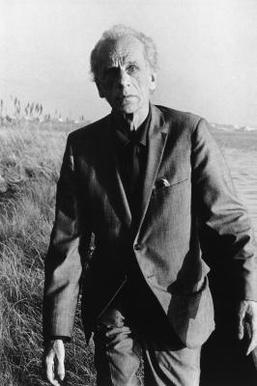
Joseph Cornell was an American visual artist and film-maker, one of the pioneers and most celebrated exponents of assemblage. Influenced by the Surrealists, he was also an avant-garde experimental filmmaker. He was largely self-taught in his artistic efforts, and improvised his own original style incorporating cast-off and discarded artifacts. He lived most of his life in relative physical isolation, caring for his mother and his disabled brother at home, but remained aware of and in contact with other contemporary artists.

Berenice Alice Abbott was an American photographer best known for her portraits of cultural figures of the interwar period, New York City photographs of architecture and urban design of the 1930s, and science interpretation of the 1940s to the 1960s.
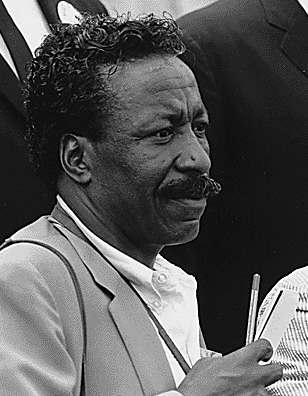
Gordon Roger Alexander Buchanan Parks was an American photographer, composer, author, poet, and film director, who became prominent in U.S. documentary photojournalism in the 1940s through 1970s—particularly in issues of civil rights, poverty and African Americans—and in glamour photography. He is best remembered for his iconic photos of poor Americans during the 1940s, for his photographic essays for Life magazine, and as the director of the films Shaft, Shaft's Big Score and the semiautobiographical The Learning Tree.

Empire is a 1965 American black-and-white silent art film by Andy Warhol. When projected according to Warhol's specifications, it consists of eight hours and five minutes of slow motion footage of an unchanging view of New York City's Empire State Building. The film does not have conventional narrative or characters, and largely reduces the experience of cinema to the passing of time. Warhol stated that the purpose of the film was "to see time go by."

The Boston Athenaeum is one of the oldest independent libraries in the United States. It is also one of a number of membership libraries, for which patrons pay a yearly subscription fee to use Athenaeum services. The institution was founded in 1807 by the Anthology Club of Boston, Massachusetts. It is located at 10½ Beacon Street on Beacon Hill.
Nostalgia, styled (nostalgia), is a 1971 American experimental film by artist Hollis Frampton. It is part of his Hapax Legomena series.
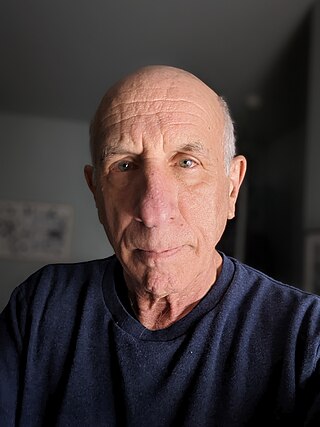
Kenneth Feingold is a contemporary American artist based in New York City. He has been exhibiting his work in video, drawing, film, sculpture, photography, and installations since 1974. He has received a Guggenheim Fellowship (2004) and a Rockefeller Foundation Media Arts Fellowship (2003) and has taught at Princeton University and Cooper Union for the Advancement of Art and Science, among others. His works have been shown at the Museum of Modern Art, NY; Centre Georges Pompidou, Paris; Tate Liverpool, the Whitney Museum of American Art, New York, among others.
Sidney Peterson was an American writer, artist, and avant-garde filmmaker. He attended UC Berkeley, worked as a newspaper reporter in Monterey, and spent time as a practicing painter and sculptor in France in the 1920s and 1930s. After World War II, Peterson founded Workshop 20 at the California School of Fine Arts, initiating filmmaking courses at the school.
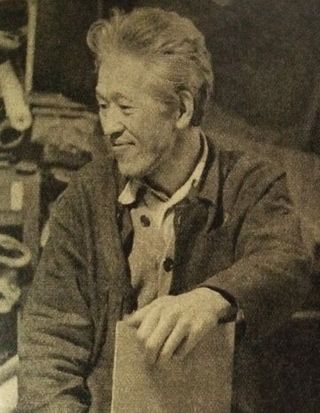
Kōshirō Onchi, born in Tokyo, was a Japanese print-maker. He was the father of the sōsaku-hanga movement in twentieth century Japan, and a photographer. His work was part of the painting event in the art competition at the 1932 Summer Olympics.
Andrew Repasky McElhinney is an American film and theater director, writer and producer born in Philadelphia. McElhinney's cinema work is in the permanent collection of MoMA-The Museum of Modern Art, New York.

(Sir) Charlie Chaplin (KBE) (1889–1977) was an English-born internationally renowned Academy Award-winning actor, comedian, filmmaker and composer whose was best known for his career in Hollywood motion pictures from 1914 until 1952, he subsequently appeared in two films in his native England. During his early years in the era of silent film, he rose to prominence as a worldwide cinematic idol renowned for his tramp persona. In the 1910s and 1920s, he was considered the most famous person on the planet.

Thelma Beatrice Johnson Streat (1912–1959) was an African-American artist, dancer, and educator. She gained prominence in the 1940s for her art, performance and work to foster intercultural understanding and appreciation.
Kevin Bubriski is an American documentary photographer.

Lime Kiln Field Day is a 1913 American black-and-white silent film produced by the Biograph Company and Klaw and Erlanger. Unnamed, unassembled, and abandoned by its producers during post-production, the original footage was saved when Biograph donated its vaults to the Museum of Modern Art in 1938. It is considered to be the oldest surviving feature film with an all-Black cast.

Titus Kaphar is an American contemporary painter whose work reconfigures and regenerates art history to include the African-American subject. His paintings are held in the collections of Museum of Modern Art, Brooklyn Museum, Yale University Art Gallery, New Britain Museum of American Art, Seattle Art Museum, Virginia Museum of Fine Arts, and University of Michigan Museum of Art.
Geoffrey Lea Winningham is an American photographer, journalist, and filmmaker best known for his photographs and documentary films focusing on Texas and Mexican culture. Geoff's work was first recognized in the early 1970s when he published the book Friday Night in the Coliseum, featuring his photographs of professional wrestling and recorded conversations with wrestlers and fans. The book was followed in 1972 by a 16mm, black and white documentary film of the same title.

The Good Design exhibition series was an industrial design program organized by the Museum of Modern Art (MoMA) in New York, in cooperation with the Merchandise Mart in Chicago, held between 1950 and 1955. No awards were granted to designers whose work was put on view in these exhibitions, despite misinformation suggesting otherwise.
References
- ↑ The Film-Makers' Cooperative
- ↑ The Cinema of Me: The Self and Subjectivity in First Person Documentary edited by Alisa Lebow - Google Books (pg.62)
- ↑ MoMA
- ↑ BFI
- ↑ Still Moving: The Film and Media Collections of The Museum of Modern Art by Steven Higgins and MoMA - Google Books (pg.255)
- ↑ "Librarian of Congress Adds 25 Films to National Film Registry". Library of Congress. Retrieved 2020-10-02.
- ↑ "Complete National Film Registry Listing". Library of Congress. Retrieved 2020-10-02.